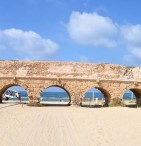Spend any time in Israel and you’ll come to appreciate Herod the Great. In his time he was feared and hated but to this day he remains unparalleled in the realm of building grandiose projects. And Herod’s projects set the background scene when Jesus of Nazareth began to spread his message of Love. Caesarea ranks among Herod’s greatest achievements. A mere dozen years from conception to completion, Caesarea was the realization of Herod’s dream to provide the Roman provence of Judea with a deep water port that would open the country to international trade. Caesarea became the catalyst to improving the local Judean economy, and it was a city based on the Roman model. As the New Testament narrates the interplay between the Jesus’ disciple Peter and the Roman Centurion Cornelius, the city played a critical role in the developing notion that the teachings of Jesus were not meant for a provincial Jewish audience alone, but instead destined to be shared with all of humanity (Acts 10).
Jewish/Zionist Sites
Hezekiah’s Broad Wall
A glance at this impressive structure, excavated several meters below the modern street level in Jerusalem’s Old City sets the mind to wondering. What if we let the archeologists have their way? Imagine the entire city dug up? What treasures would be revealed, questions answered, biblical verses confirmed. But Jerusalem is a living city and a balance is struck, homes above, antiquities revealed, too an extent, below. Here King Hezekiah spared nothing in his attempt to save Jerusalem from the Assyrian onslaught, 2700 years ago. Note the remnants of the homes he had to destroy to save the city. Let your guide tell you the full story about this place.
Western Wall (The Kotel)
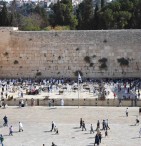
Jewish sources write that the Divine Presence rests upon the Western Wall. The Midrash quotes a 4th-century scholar: “Rav Acha said that the Divine Presence has never moved away from the Western Wall”. 18th-century scholar Jonathan Eybeschutz writes that “after the destruction of the Temple, God removed His Presence from His sanctuary and placed it upon the Western Wall where it remains in its holiness and honour”. Great Jewish sages, including Isaac Luria and the Radvaz, experienced a revelation of the Divine Presence at the wall.
(Wikipedia)
The Romans called the Second Temple in Jerusalem the most beautiful building in their empire. After they destroyed it in the year 70 of the common era only the Western retaining wall below the temple mount survived. Tradition relates that the presence of God hovers by the wall and has never left there. Jews have always mourned the loss of the temple and throughout the ages have sought to pray as close as possible to the site of the ancient temple. For the last 600 years Jews have prayed at the Western Wall.
Jerusalem
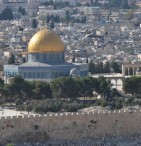
“‘Eternity’ – this refers to Jerusalem”
(Talmud: Berachot 58a)
Jerusalem would not exist but for the human need for connection to the mystery of God.
If you only have one day to spend in Israel, spend it in Jerusalem. Feel the history at every turn. A heavy atmosphere permeates the city, an air of gravity distinctly lacking in coastal Tel Aviv, just an hour away.
Jerusalem sits above the Judean Desert and the views from Jerusalem’s Mt. of Olives toward the desert, the Jordan Valley and the Kingdom of Jordan in the distance are, for the uninitiated, sudden and breathtaking.
Jerusalem remains the key to understanding the three major monotheistic faiths. It has also physically expanded and now is home to over 820,000 people, Israelis and Arabs, Christians, Jews and Moslems.
The mountain air is clear as water
The scent of pines around
Is carried on the breeze of twilight,
And tinkling bells resound.
The trees and stones there softly slumber,
A dream enfolds them all.
So solitary lies the city,
And at its heart — a wall.
Oh, Jerusalem of gold, and of light and of
bronze,
I am the lute for all your songs.
The Golan Heights – Vistas and Pioneers on the Frontier
The volcanic Golan Heights is Israel’s northeastern border. One gets to the Golan by traveling from the Hula Valley east across the Upper Jordan River or ascending east from the Sea of Galilee. To its east the Golan borders Syria. To its south is the small Yarmuk River and the Hashemite Kingdom of Jordan. On its northern edge rises Mt. Hermon to a height of 9,200 feet. Israel only holds 6% of the Hermon. The rest of the Hermon is held by Syria and Lebanon.
Jewish roots on the Golan date back to biblical times when the Israelite tribes of Gad, Reuven and part of Menashe conquered an area called the Bashan from the Amorite tribe. Part of the Bashan is today’s Golan Heights. Archeologists have discovered remains of 34 Jewish synagogues, houses or worship, in the Golan. These remains date from Roman and Byzantine times.
Um Al Kannatir Ancient Synagogue
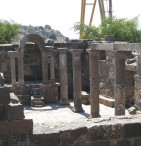
The famous explorers Laurence Oliphant and Gottlieb Schumacher discovered the site in 1884. This site, once used to produce textiles due to the presence of a spring here, houses the remains of a large 6th century synagogue. The building measures over 2500 square feet and almost 40 feet high. It features a stone chiseled figure of an eagle, an ancient Jewish artistic symbol. The structure collapsed during the terrible Golan earthquake of the year 749.
Golan Heights Welcome Center in Katzrin
When in Katzrin, capital of the Israeli Golan, stop by the Katzrin Industrial Center and visit the Golan Magic welcome center to watch a beautiful film presentation of Golan scenery on a 180 degree panoramic screen. Later you’ll absorb Golan history watching history unfold on a huge model of the Golan. The welcome center is housed next to the Golan Brewery and is within a two minute walk to The Golan Winery and the Golan Olive Oil Mill. In Katzrin itself, just a minute’s drive, you may visit the Katzrin Antiquities Park and the Golan Antiquities Museum, both located in Katzrin.
Golan Heights Winery
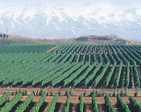
Good soil, climatic conditions and winemaking skills combine to create a Golan success story. The winery’s first vintage was released in 1984 and it now produces over six million bottles of wine each year. It has won 58 international gold medal wine awards two international best-winery trophies. You can choose to take the winery tour or just experience the wine-tasting.
Golan Heights Jeep/ATV/Tomcar Tours
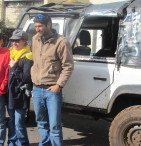
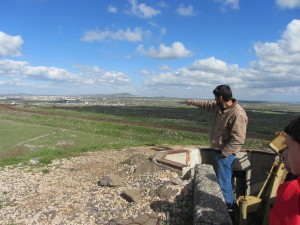 Jeeps can take you off the beaten track. You’ll experience Golan wildlife and the border country with Syria in a way that even most locals don’t get to experience. Or, explore the hills and lowlands around the Jordan River or the Sea of Galilee where wildlife abounds and Israeli farmers produce award winning produce.
Jeeps can take you off the beaten track. You’ll experience Golan wildlife and the border country with Syria in a way that even most locals don’t get to experience. Or, explore the hills and lowlands around the Jordan River or the Sea of Galilee where wildlife abounds and Israeli farmers produce award winning produce.
When we ask tourists about their trip highlights Golan Jeep tours always make the list. As tour guides we also look forward to these off the beaten track adventures. We utilize local driver-guides who live in the area and know the terrain and history intimately as they live in the region, have served in the army here and worked locally as cowboys and farmers.
Gamla National Park and Nature Reserve (Raptor Observation)
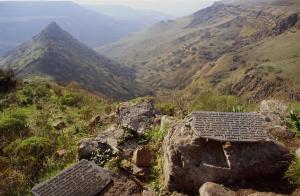 Situated in a remote spot overlooking two small streams and the Sea of Galilee in the distance, Gamla combines two unrelated areas of interest for explorers.
Situated in a remote spot overlooking two small streams and the Sea of Galilee in the distance, Gamla combines two unrelated areas of interest for explorers.
On the far side of a canyon nest a very small population of vultures and eagles. A very short walk from the bird-watching you can overlook the ancient town of Gamla, arrayed on the hump-like hill located in the canyon ahead of you. There Jewish defenders held out against Roman Legionnaires in the year 67 as the Romans began to quell the Great Jewish Revolt which culminated in the destruction of the Second Temple in Jerusalem.
OZ 77 & The Valley Of Tears
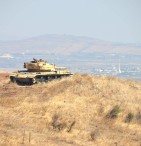
Flanked today by peaceful vineyards the Valley of Tears was named by Israeli soldiers who stood here to defend the eastern approaches to Israel during the 1973 Yom Kippur War. Although outnumbered 8:1, after three days of continuous fighting the 77th battalion of the Israeli 7th brigade was able to break the Syrian advance here.
Kofi Annan and Mount Bental
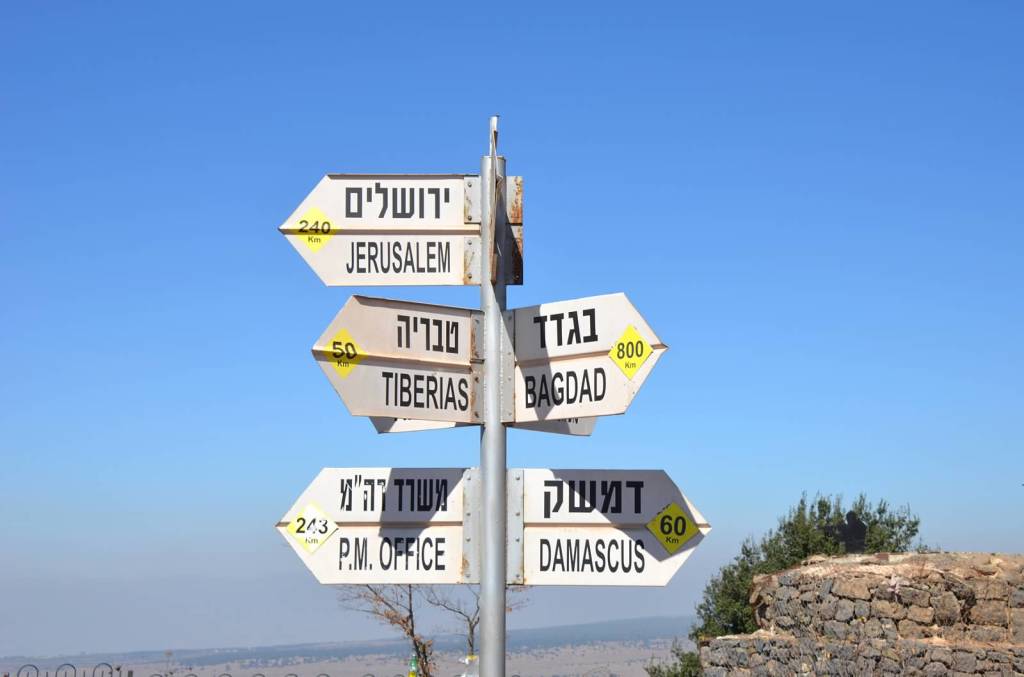 Come up to this high, rugged place, as east as you can go in Israel (unless you take one of our borderland Jeep tours!). This site functioned as an Israeli fortress in the 1960’s and 1970’s and now affords a cool climate, brisk winds and unparalleled views. Gaze out over the Syrian Plain, spread out beneath you and come to appreciate the strategic importance of the entire Golan Heights. Then take a break at Kofi Annan, a café created by the intrepid Kibbutzniks who live below this mountain on its protected, western side. Engage the local Druze farmer who brings his fresh produce, honey and tehina for your enjoyment.
Come up to this high, rugged place, as east as you can go in Israel (unless you take one of our borderland Jeep tours!). This site functioned as an Israeli fortress in the 1960’s and 1970’s and now affords a cool climate, brisk winds and unparalleled views. Gaze out over the Syrian Plain, spread out beneath you and come to appreciate the strategic importance of the entire Golan Heights. Then take a break at Kofi Annan, a café created by the intrepid Kibbutzniks who live below this mountain on its protected, western side. Engage the local Druze farmer who brings his fresh produce, honey and tehina for your enjoyment. 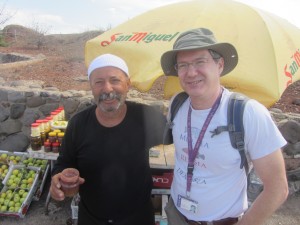
Mt. Hermon: Rugged Vistas and Ancient Holy Sites
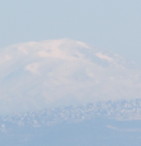
“Come with me from Lebanon, my bride…. Descend from the crest of Amana, from the top of Senir, the summit of Hermon, from the lions’ dens and the mountain haunts of the leopards.” (Song of Songs 4:8.)
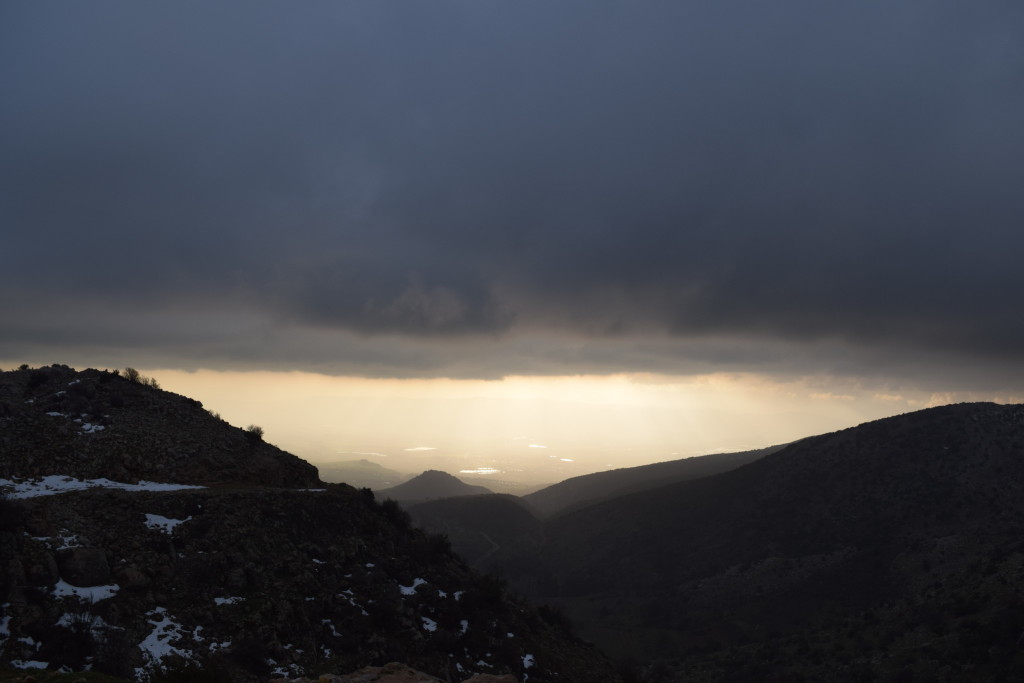
Heavy cloud cover over the lower slopes of Mt. Hermon with the Nimrod fortress, a medieval Islamic structure, seen in the distance.
In ancient times locals ascended the forbidding heights of Mt. Hermon to worship their deities. Explorers have subsequently discovered dozens of temples and holy places in the mountains inaccessible high places. This was the place where God spoke to the Patriarch Abraham at Brit Ben HaBtarim, promising him the Holy Land. Scholars also recognize it as the true site of the Mt. of Transfiguration in the New Testament.
How to put together your Water and Wine tour of Israel
On our Water and Wine Tours website you will not find standard tours.
Don’t worry. We’ll make sure that you experience the must-see sites in the country. But we’ve also included a comprehensive list of sites, by region for people with many different interests, with enough description for you to ascertain whether it’s the sort of place you want to spend your time.
You know your budget and how much time you have to spend here.
So here are our recommendations, based on years of leading all sorts of tours throughout the country.
- Ask yourself if this trip is a vacation. Do you want to see sites but also feel really relaxed at the end of each day? So that you don’t need a few days of sleep upon your return home? If this is the case then try to restrict yourself to three major sites per day. Between the sites, travel and lunch 8-10 hours will pass quickly.
- If you’re more inclined to describe yourself as a pilgrim or someone who wants a survey of sites, then expect to visit up to five sites per day. You’ll be spiritually satisfied but you’ll also need to get a good night’s sleep every night.
“A life changing event”
"Our guide, Zach Levin, made the trip a life changing event for both Linda and me. He was very sensitive to our needs and went out of his way to make sure we got the full Israeli experience. Zach is very knowledgeable and his passion and enthusiasm contributed to our getting the full flavor of the country."
Harvey and Linda W
Your Tour Guide
Water & Wine Tours specializes in individually tailored tours catering to the interests of its clients. Our founder, Zach Levin, is an experienced, licensed tour guide who majored in Middle Eastern Languages and Cultures at Columbia University in the City of New York.
Our tour guides make the history and culture of Israel come alive. They understand that the customer is always right and want you to experience an unforgettable Israel. We’ll take you to places which you’ll love and never forget. When you need to be left alone we’ll sense it. When you need an extra hand we’re there for you.

